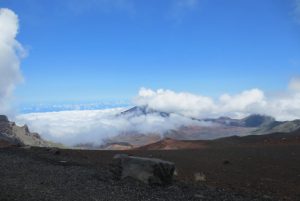As I was doing my morning routine, which lately includes sifting through the previous night’s exposures for various reasons, a particular set of images caught my eye with one being exceptionally flashy:

Now, what on Earth could that be, I thought to myself, with mouth agape and eyes wide. Then, I spotted the other two obvious images that indeed showed a meteoroid entering the Earth’s atmosphere. We have seen many meteors in our data in the past, but nothing ever this strange looking! So I looked closely at the other two images, which it quickly became apparent that they were all three different parts of the sky. What’s more, they’re all right next to each other–now this is getting interesting! I began to wonder, could this be some kind of erratic path that it took as it broke up? Let’s stitch them together into a mosaic to see what it looks like. The results looked puzzling when I first constructed the mosaic:
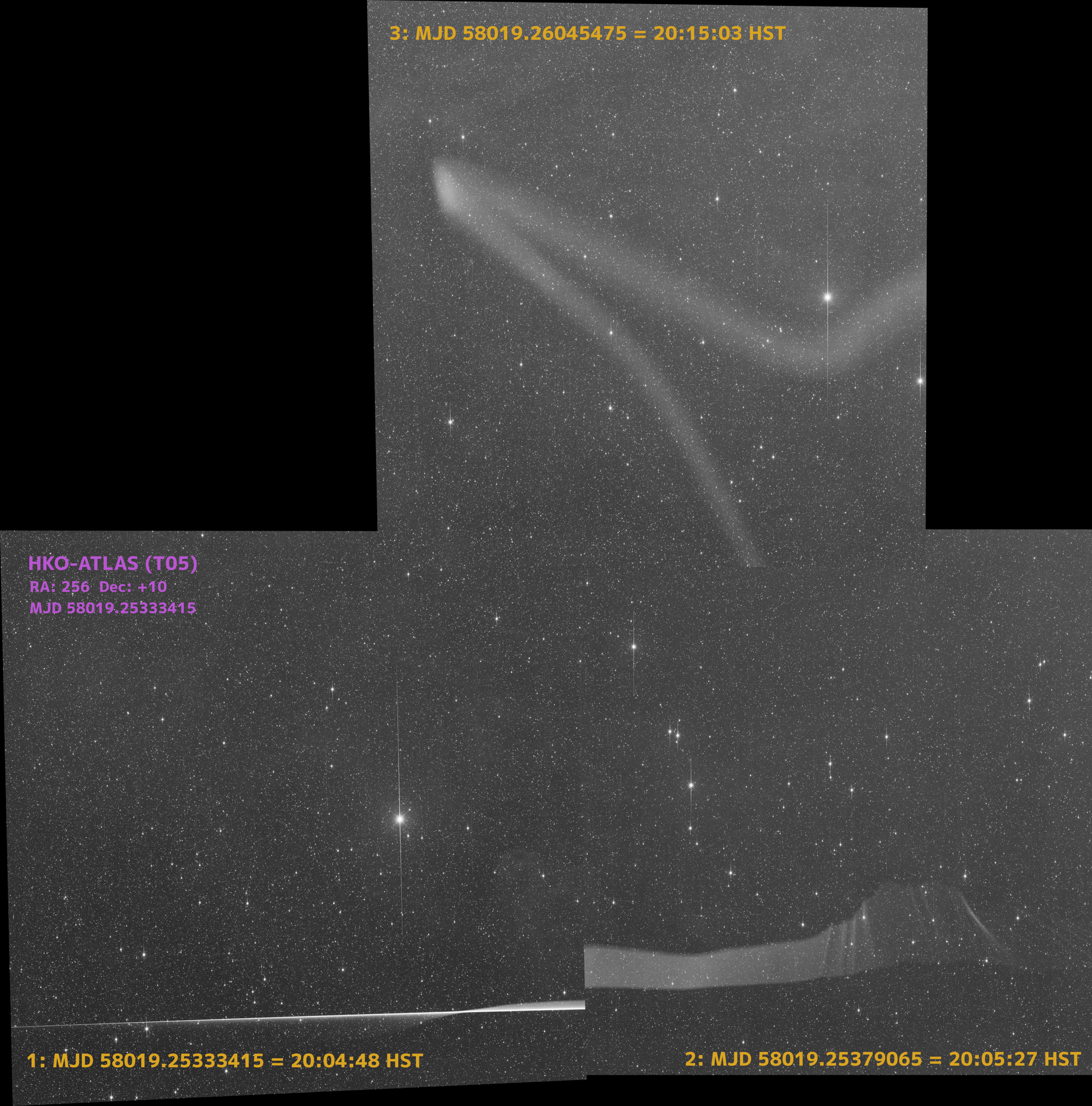
The discontinuities made sense, because of time difference between images, but I wasn’t sure if the object had split up and that’s what was causing the big looped trail in the third image. But wait a minute–ahah! We use an ‘auxiliary’ camera on the ATLAS telescopes that matches in exposure length and timing to the main camera. So I went to pull those images and chucked them together. Finally, a coherent picture of what happened!
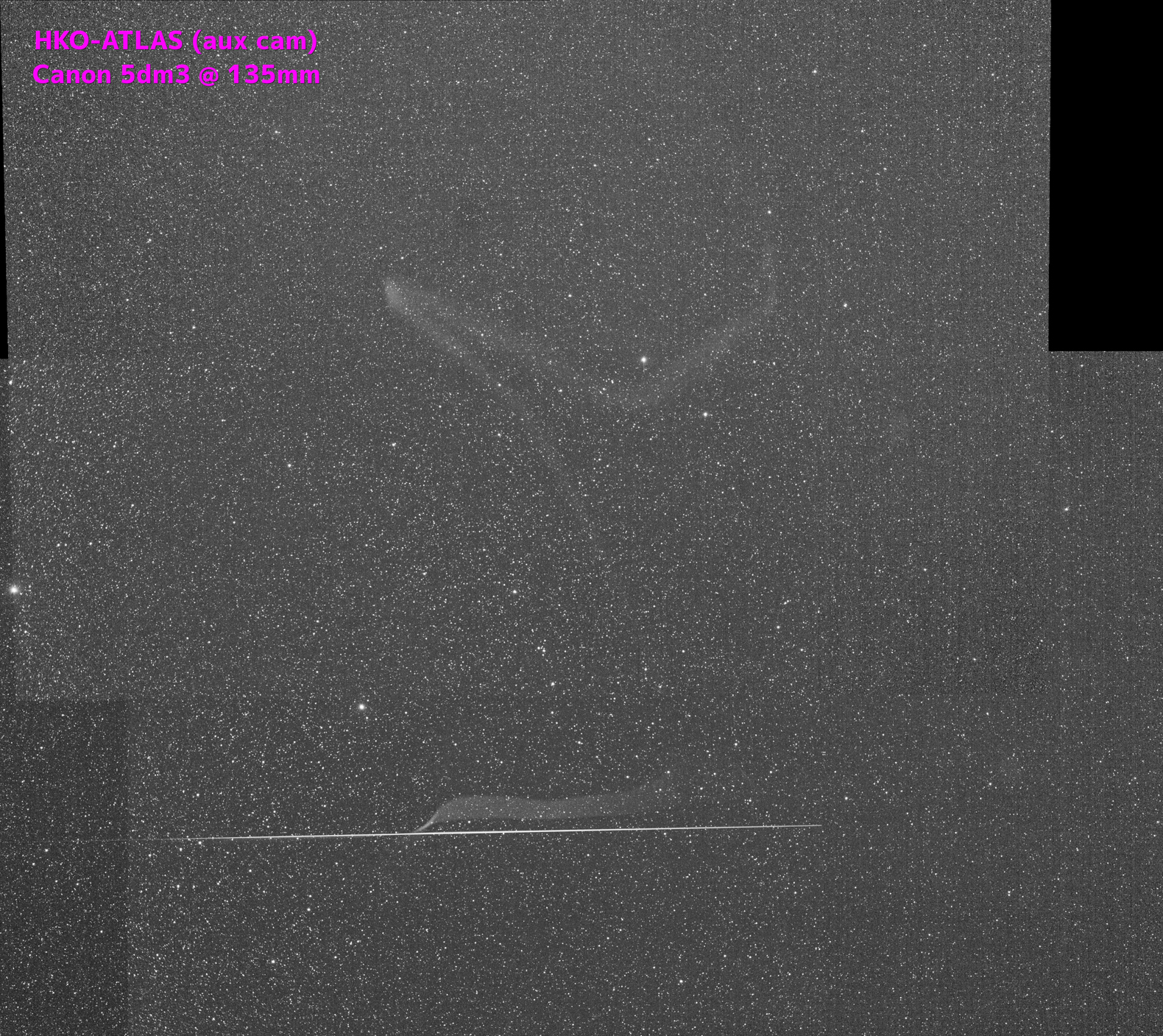
In summary, to explain what you’re looking at here: the first image contains the streak; the second image contains the large smoke trail that had drifted slightly up in the 20 or 30 second period between images; and the third image at top shows the smoke trail after it had drifted for a little over 10 minutes.
Category Archives: Topics
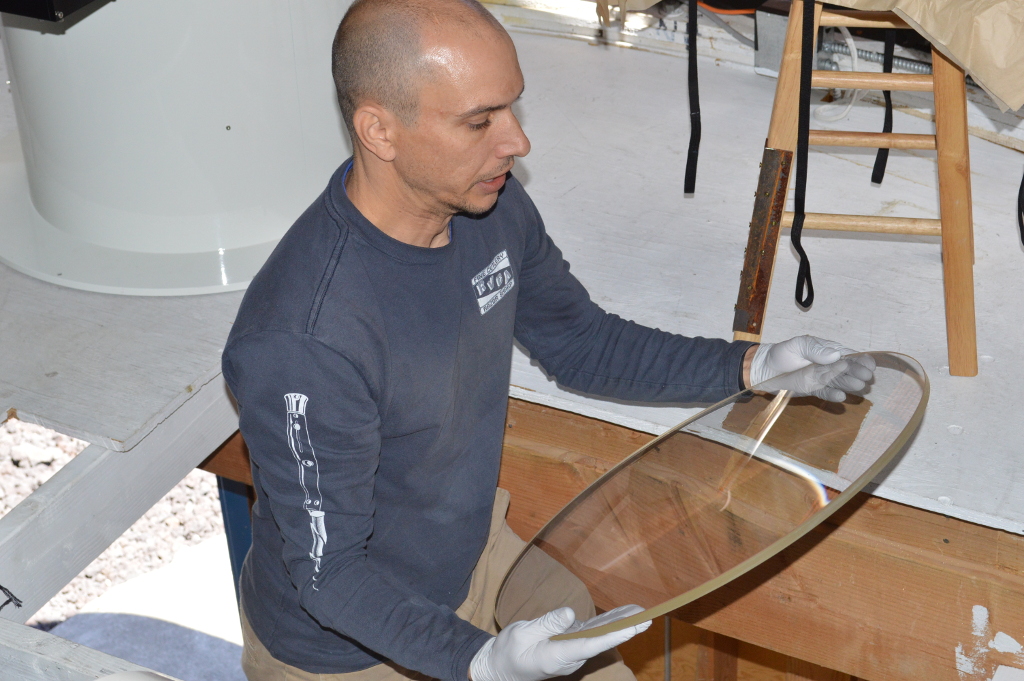
New Schmidt Correctors Installed!
ATLAS is happy to report that we have recently replaced the Schmidt correctors on both of our telescopes! The original Schmidt correctors did not make really sharp images even at best focus, so our DFM telescope was not performing at its real capability. The new correctors from Coherent make star images that are only 2 pixels wide!
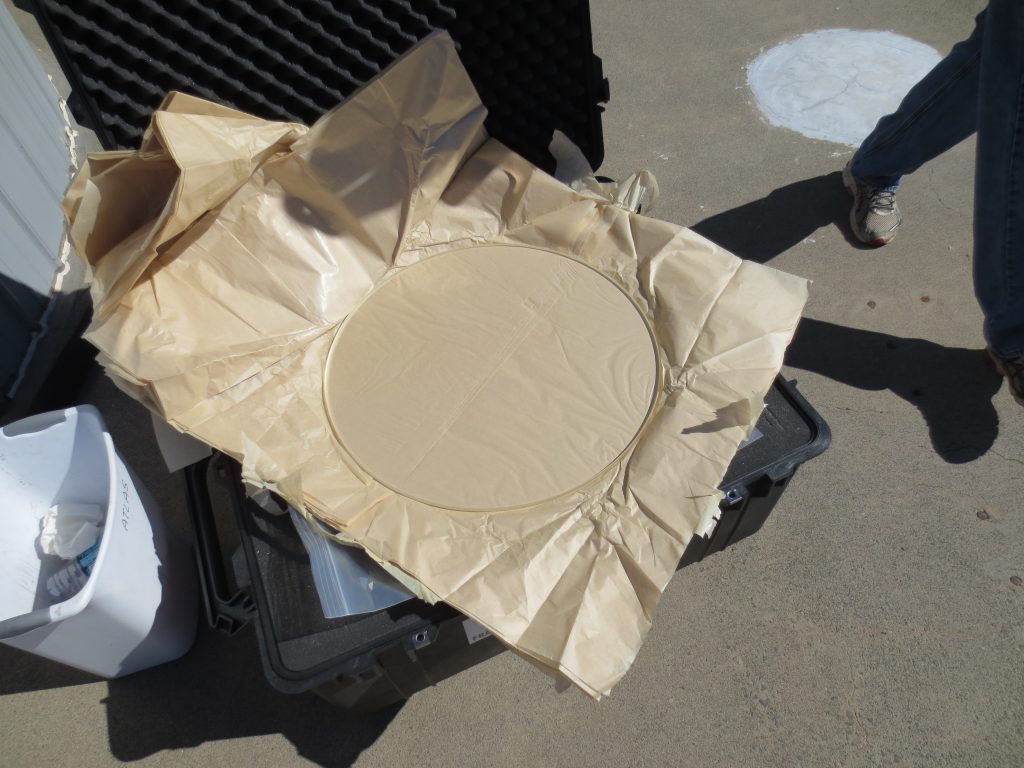
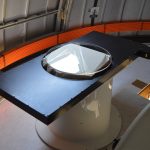
Replacing the correctors was straight-forward and without any trouble. The procedure was fairly short, and involved removing the top portion of the OTA, which holds the mechanical shutter and corrector plate. Then, we came up with a very simple yet elegant plan to remove the corrector from its cell by simply lowering the top portion of the OTA onto a bar stool, and allowing the stool to capture and “lift” the corrector plate right out of the top portion of the OTA.
Once we replaced the correctors (we all know the dreaded new-telescope-equipment curse which causes clouds to form overhead for days or even weeks following) and were able to take first-light images, the new images revealed slight optical misalignments of our telescopes that were previously undetectable. This brought on a period of detective work figuring out the misalignments through ray-tracing, followed by several long, cold nights sitting beside the telescope making minute adjustments.
However, all the hard work from the ATLAS team paid off, and we saw a great increase in performance that was reflected in things such as our PSF and sensitivity gain. We are quite pleased with the results and are loving the new, sharp star images across the entire field.
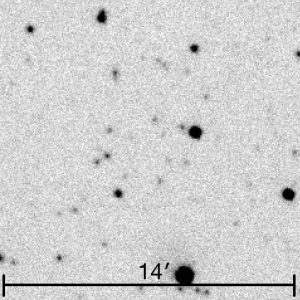
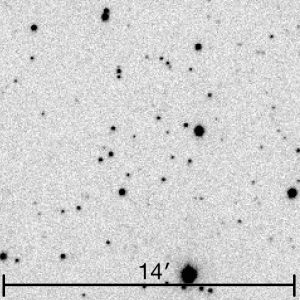
ATLAS Telescope 2 Installed on Mauna Loa
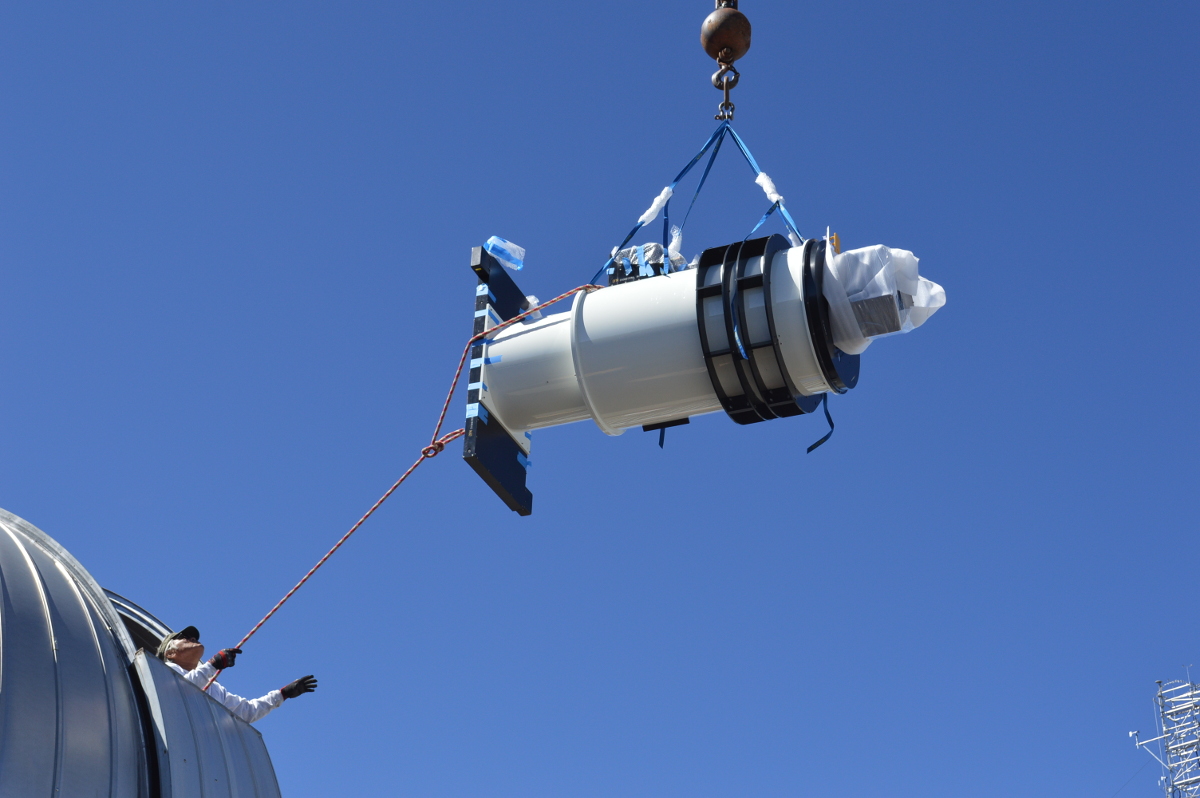 We have finished installing the second ATLAS telescope! The ATLAS team, together with two engineers from the Colorado company that built the telescope, spent five days (Jan 30 – Feb 3) installing it in place of the old pathfinder telescope on Mauna Loa. It was a rocky and exciting ride.
We have finished installing the second ATLAS telescope! The ATLAS team, together with two engineers from the Colorado company that built the telescope, spent five days (Jan 30 – Feb 3) installing it in place of the old pathfinder telescope on Mauna Loa. It was a rocky and exciting ride.
We expected a lot of minor problems (scheduling difficulties, missing bolts or other small components, scary moments lifting heaving and delicate equipment with a crane), but thanks to good planning, all of these were resolved quickly. It wasn’t until February 1, when we had the telescope fully installed and carefully counterweighted and balanced, that we encountered a major problem – almost a disaster.
The problem? The new telescope was big enough to collide with the top of the dome at some positions!
Specifically, the corners of the shutter housing at the front of the telescope could hit low-hanging bolts on the housing of the motor responsible for opening the dome. 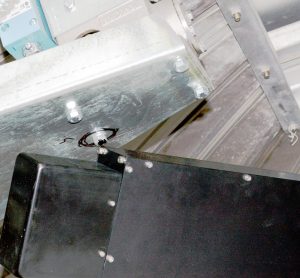 For a manual telescope, this might have been OK – people could just watch carefully every time the telescope and dome were moved, to make sure they stayed safely clear of one another. But an ATLAS telescope has to be fully robotic. It has to make a thousand moves every clear night, automatically, with no failures – and no human watching. An ATLAS telescope that can collide with its own dome is useless. Sooner or later, the robot would slew the telescope into the dome bolts at high speed.
For a manual telescope, this might have been OK – people could just watch carefully every time the telescope and dome were moved, to make sure they stayed safely clear of one another. But an ATLAS telescope has to be fully robotic. It has to make a thousand moves every clear night, automatically, with no failures – and no human watching. An ATLAS telescope that can collide with its own dome is useless. Sooner or later, the robot would slew the telescope into the dome bolts at high speed.
The night of Wednesday, February 1, was a dismal one for the ATLAS team. We had considered many options to fix the problem (such as jacking up the whole dome, re-designing and re-building the upper part of the telescope to be less tall, or sliding the telescope downward in its mount and accepting the resulting weight imbalance), but most were unacceptable or impractical. We had only one immediately feasible idea that we thought might work.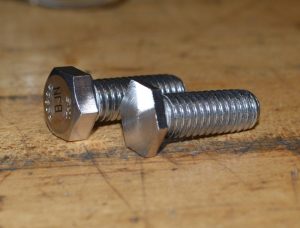
We took the bolts for the dome motor housing to the machine shop at IfA-Hilo, and used a metal lathe to shave away as much of the bolt heads as we dared. We left only barely enough for a socket wrench to grip. Then we drove up Mauna Loa again, and replaced the new short-headed bolts in the motor housing.
For over an hour, we tried to make the telescope hit the new, shortened bolts. It would come frighteningly close – but after trying dozens of positions, concentrating on those that seemed most dangerous, we were convinced collisions were no longer possible. The short-headed bolts had saved the day. That night the ATLAS telescope on Mauna Loa operated robotically for the first time. Over the subsequent nights, it has continued to operate safely, automatically taking hundreds of images each night, just like its one-year-older twin on Haleakala.
We include below the first-light image from the new telescope. While most ‘first-light’ pictures are merely symbolic images of spectacular astronomical objects taken sometime during the commissioning of a new telescope or instrument, this is literally the first time the Mauna Loa ATLAS telescope imaged stars. It is, of course, out of focus: it was the first step in focusing the new telescope for the first time. Nevertheless, experienced stargazers will easily recognize the Pleiades star cluster. The telescope was soon focused, and will discover its first near-Earth asteroid any day now. The adventure continues.
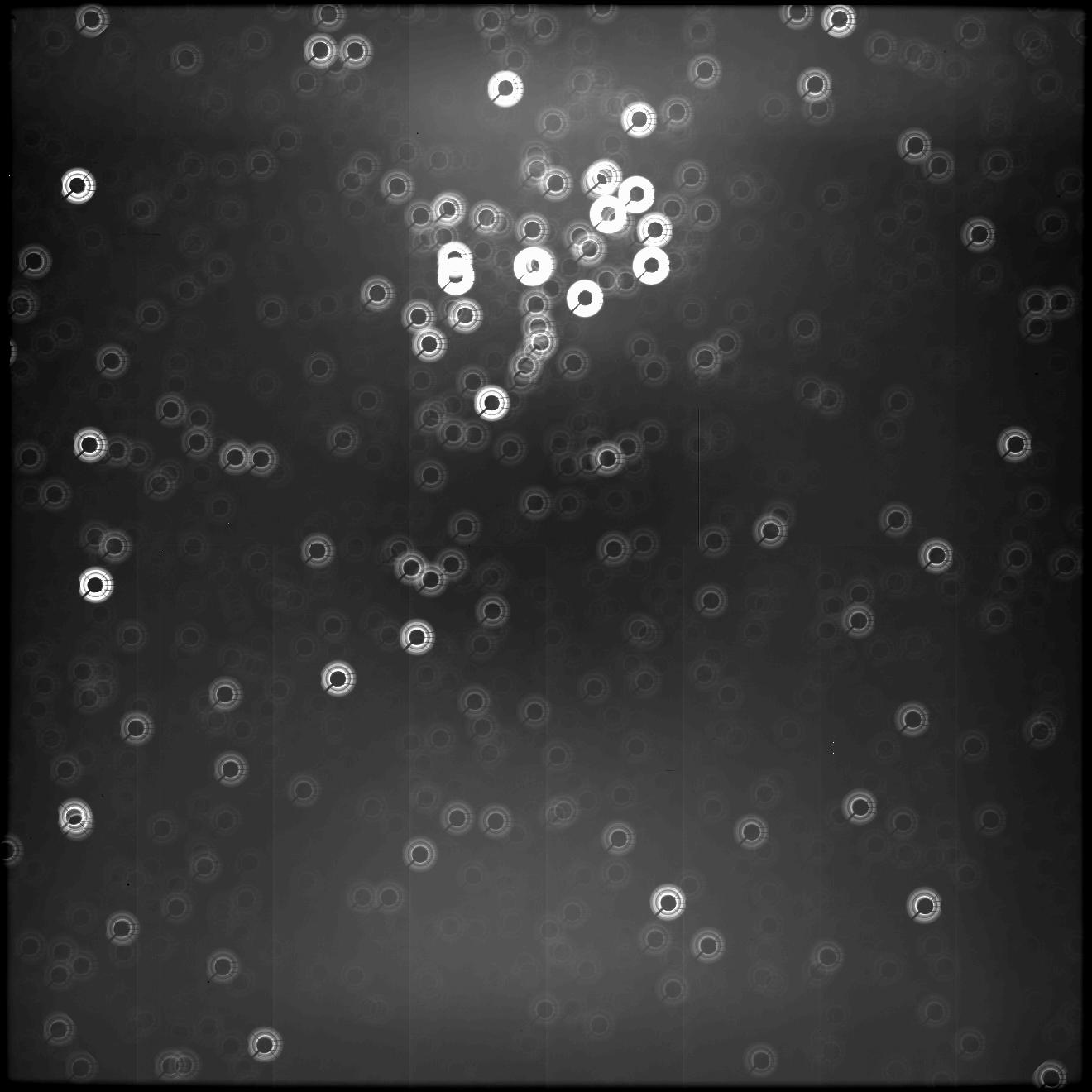
ATLAS discovers small NEO that might strike Earth in 70-100 years
ATLAS has discovered its first virtual impactor, or VI, an asteroid designated 2016 SJ35. The asteroid was discovered on September 28th and classified as a VI a few days later, when enough observations were available to calculate a useful approximate orbit. Based on current data, it has a four-in-a-million chance of hitting Earth between the years 2086 and 2109. This probability was calculated by scientists at NASA’s Jet Propulsion Laboratory (JPL), using measurements from ATLAS and other observatories. You can view detailed results from JPL’s calculation for 2016 SJ35 here, and those for other VI’s here.
With an estimated size of 50 meters, 2016 SJ35 does not pose a global threat. In the unlikely event that it does hit the Earth, it will cause significant damage over a region no more than 100 km across. Thanks in part to ATLAS’ discovery, a precise impact prediction will be available years in advance, allowing everyone in the impact zone to evacuate safely. Most likely, however, further observations will show that 2016 SJ35 is not going to hit the Earth at all.
To understand what it means for 2016 SJ35 to be a VI, consider the idea of an ‘approximate orbit’. When an asteroid is first discovered, very little is known about its orbit. Using the laws of gravity and the known parameters of the Solar System, we can calculate a huge variety of possible orbits that would match the initial measurements. We don’t know which one of these orbits the asteroid is really on. As astronomers continue to observe the asteroid, their new measurements rule out most of these preliminary orbits. We can say, “Well, if it were on that orbit, we wouldn’t have observed it there.” Vast numbers of orbits could still fit the data, but now all these possible orbits are similar. We can predict where the asteroid will be in the distant future with some accuracy, because all the possible orbits predict it to be in about the same place.
The orbits don’t all predict exactly the same place, so there is some range of possible positions, called the ‘uncertainty’ of the prediction. This is what we mean by an approximate orbit: we don’t know exactly what the orbit is, and we don’t know exactly where the asteroid will be in the distant future, but we can make a good guess. Even more importantly, we know what we don’t know. We have calculated the uncertainty of the prediction, so we know how far off our guess could be.
The definition of a VI is that some of the possible orbits still hit the Earth. In other words, if we ask “Where will 2016 SJ35 be at a specific time in the year 2086?”, one of the possible answers is, “Right where Earth will be at that same moment!” Another way of saying this is that the uncertainty of the prediction for 2016 SJ35 overlaps the known position of Earth on that date. However, most of the possible orbits don’t predict a collision with Earth: only four out of a million of them do.
Astronomers all over the world will continue to make measurements of 2016 SJ35 because of its very interesting status as a VI. These new measurements will rule out more possible orbits, almost certainly including the orbits that impact Earth. When this happens, 2016 SJ35 will no longer be a VI. If, on the other hand, the new measurements don’t rule out the orbits that hit the Earth, they will rule out other orbits. If this continues as more measurements are made, the calculated probability of an Earth impact will increase until we know for sure that 2016 SJ35 is going to hit the Earth. In that case, further extremely precise measurements will enable us to calculate exactly when and where the impact will happen, so that our great-grandchildren can be ready.
The question of whether or not this asteroid can hit the Earth is likely to be answered soon! We will post updates as new measurements become available.
Andrei Sherstyuk
It is with great sadness that we report the passing of our friend and colleague Andrei Sherstyuk at the age of 51. He died suddenly of a heart attack on August 4, 2016, at the Institute for Astronomy, where he had continued to work on the ATLAS project even through the morning of his death. We include below what his brother and wife wrote for him, and a few pictures from his creative and dedicated — though tragically short — tenure on the ATLAS team. The last picture Andrei took himself — on a morning run last Christmas Eve, near his home in Novosibirsk.
Instead of Eulogy
By Sergey and Katya Sherstyuk
Each man begins with his or her parents. Andrei was raised by his mother, Lidia Bobrova. She carried all the burden and pleasure of raising two boys. Andrei was the younger one. At the age of 13 he spent one year in Poland, where his mother got a job, which was very rare and enviable chance at that time. When they returned back to the USSR, Andrei managed to catch another opportunity – he was admitted to the prestigious physical-mathematical school affiliated with Novosibirsk State University. This school gathered talented kids from the whole Siberian and far-East region of the country. After graduation he entered Novosibirsk State University. During his years at the NSU he studied a wide variety of disciplines – beginning from algebra, functional analysis and ending economy and scientific communism; he majored in physics and computer science. Naturally, he spent a good deal of time with other activities – mountain climbing, speleology, summer work in Hungary. And there were two years in the military, after he’d been drafted, along with all other men in his year. He graduated with a diploma on “Automation of physical experiment” and got a position at the local research institute.
Andrei met Katya in 1988 at an extra curriculum English language club when they were both juniors at Novosibirsk State University. They fell instantly in love with each other and got married several months later, just before graduation. In 1990 Katya was admitted and started as a PhD student at Caltech, and Andrei joined her soon after. These student years after they met were like a dream for them – so much love, friends around, amazing adventures and hard, hard work.
When Andrei joined Katya at Caltech, he said: “I did enough studying in my life. I want to work.” He was lucky to join an AT&T research team which was collaborating with a Caltech professor Fred Thompson on a project incorporating natural languages with computers and over the internet. This was essentially the same idea as the “world wide web” that was invented and changed the world just a couple of years later.
When Andrei received his first salary in the US, he bought Katya a dozen roses with stems so long that they were almost Katya’s height. Katya was studying for the qualifying exams with her classmates in their graduate student housing unit. When Andrei brought in the flowers, everyone was stunned… Andrei was like that throughout his life – an amazing romantic who gave his wife roses on every occasion.
Working at a research team on the Caltech campus, submerged into a unique intellectual atmosphere, Andrei soon changed his mind about studying. He entered a Master’s program in computer sciences and took a computer graphics class with Jim Blinn, a pioneer in computer animation and scientific visualization. This class changed everything; computer graphics instantly became Andrei’s passion.
In 1994, Andrei and Katya got their degrees from Caltech and moved to Melbourne, Australia, where Andrei continued his study in computer graphics as a PhD student in Monash University. Again, the Melbourne years were fantastic – Katya’s first job at Melbourne Uni, Andrei’s PhD work producing techniques and images that appeared on cover pages of computer graphics journals, and lots of friends, hiking, camping, driving along the coast up north from Melbourne, almost to the Great Barrier Reef, seeing Australia’s stunning beauty.
When Andrei finished his PhD in 1999, he got a job with an R&D team of Square USA, which was working on a very ambitious “Final Fantasy” animation movie that used tons of computer graphics. The studio was in Honolulu. Now it was Katya’s turn to follow her husband, which she gladly did several months later. These were joyful times – an ambitious project at work, a young and energetic group of colleagues from all over the world who instantly became friends, endless beach and hiking on the weekends… And Andrei and Katya started the family. Their son Ilya was born on Christmas day in 2000.
Andrei was an amazing father. He loved his and other people’s children so much and spent so much time with them. When baby Ilya started to talk, he would call his mom: “Daddy, daddy… I mean, mommy…” Dad was everything for him. When Andrei’s and Katya’s daughter Ksenia was born in 2004, another love story started. Looking through Andrei’s pictures, it is almost impossible to find a portrait of his own: he is always with the kids, giving them a warm hug, soothing them to sleep, or building a gingerbread house together.
After Square USA, Andrei worked on several high-tech projects, affiliated with the University of Hawaii. He worked at the Telehealth Research Institute at UH medical school on projects that would use virtual reality to treat war veterans from psychological traumas, and to help train doctors. Lately he worked for the Institute for Astronomy as part of the ATLAS project. Andrei would only take jobs that are creative and pushing the frontier. He loved research and loved creating new knowledge. There were no compromises and he gave himself fully to the projects he was working on.
In addition to his main job, Andrei kept thinking about new research ideas in computer graphics, collaborating with people all over the world. Andrei joked that writing research papers for him was like a hobby. He loved going to scientific conferences, and was a reliable referee for many journals and conferences in computer graphics.
Life was intense and very fast-paced and sometimes Katya would feel down. Andrei provided huge emotional support. One day he wrote, for Katya and himself, a list of “Good Things in Life.” He put it on the wall where they both could see it every day. Here it is:
GOOD THINGS IN LIFE:
1. We are alive.
2. We are in good health.
3. Our children have a wonderful future, full of amazing discoveries.
4. You and I are the basis of happiness for our children and for each other.
5. Almost everything that seems bad in life is not worth even a fraction of time that we spend on it.
6. The more we focus on good things, the better things become.
7. The more we share our feelings and thoughts with each other, the better life is.
8. We have to listen to the children and to each other carefully at least once a day.
This is the man Andrei was – a unique professional, and an amazing father, husband, and friend.
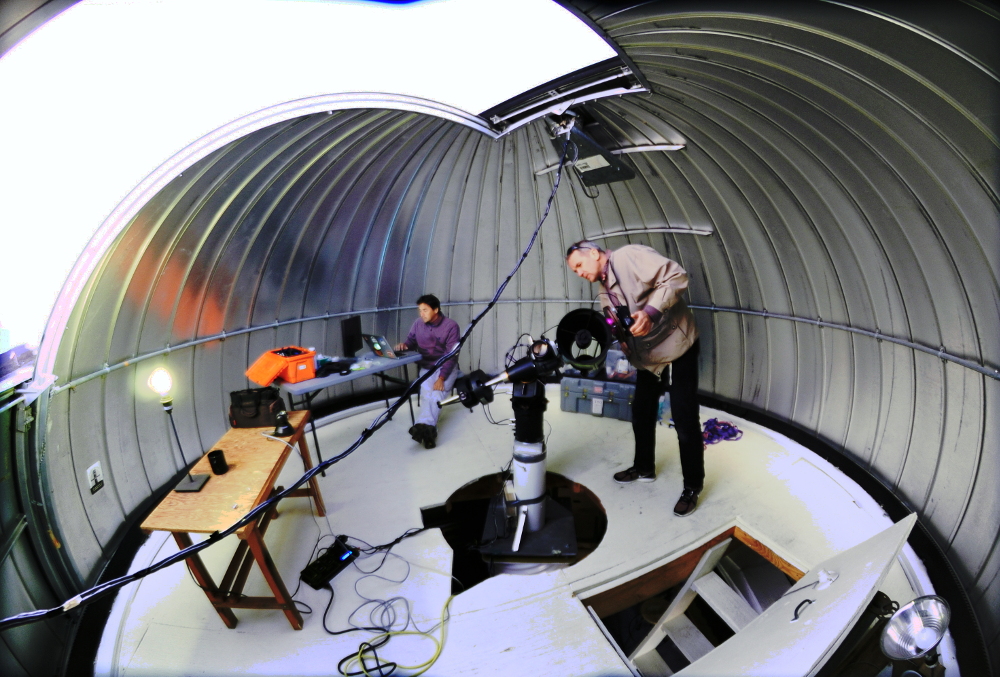
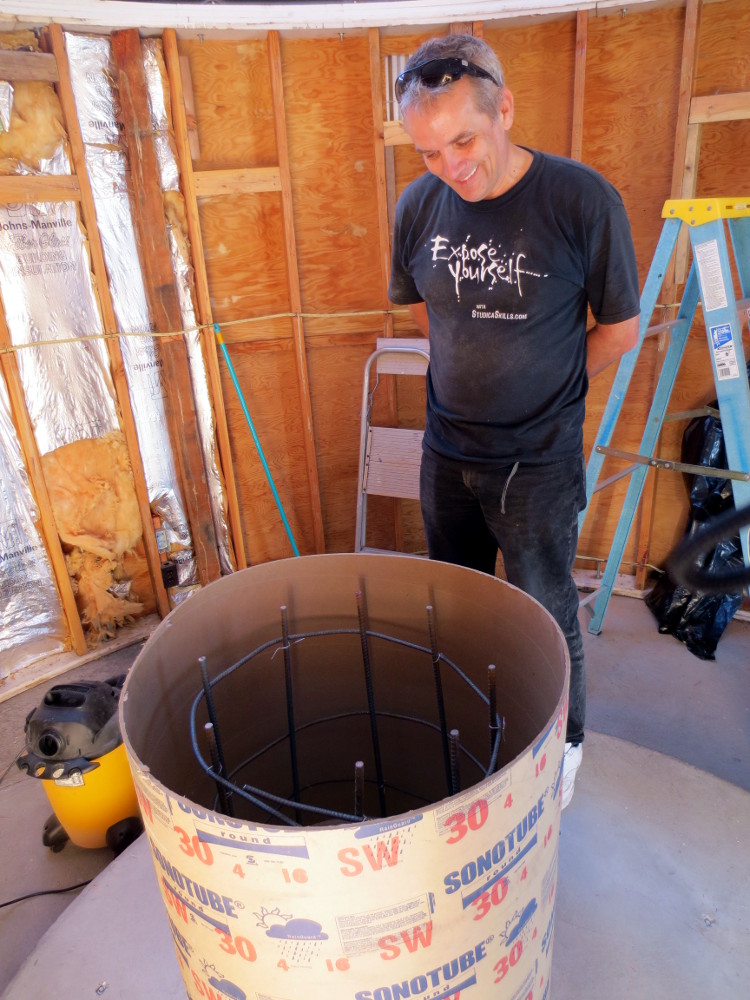
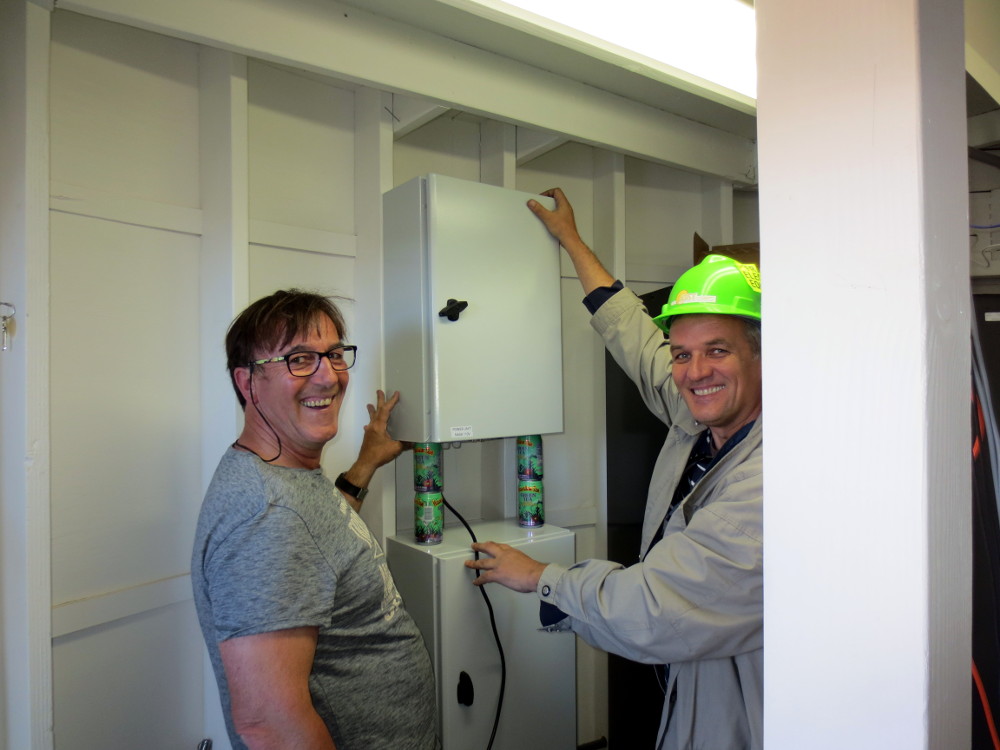
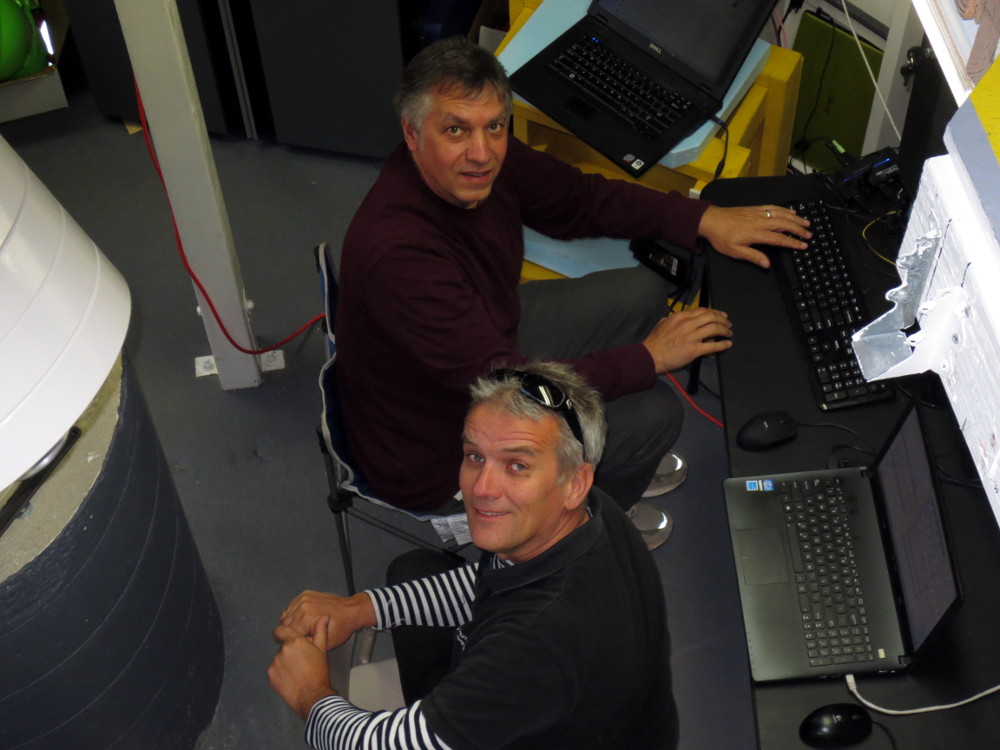
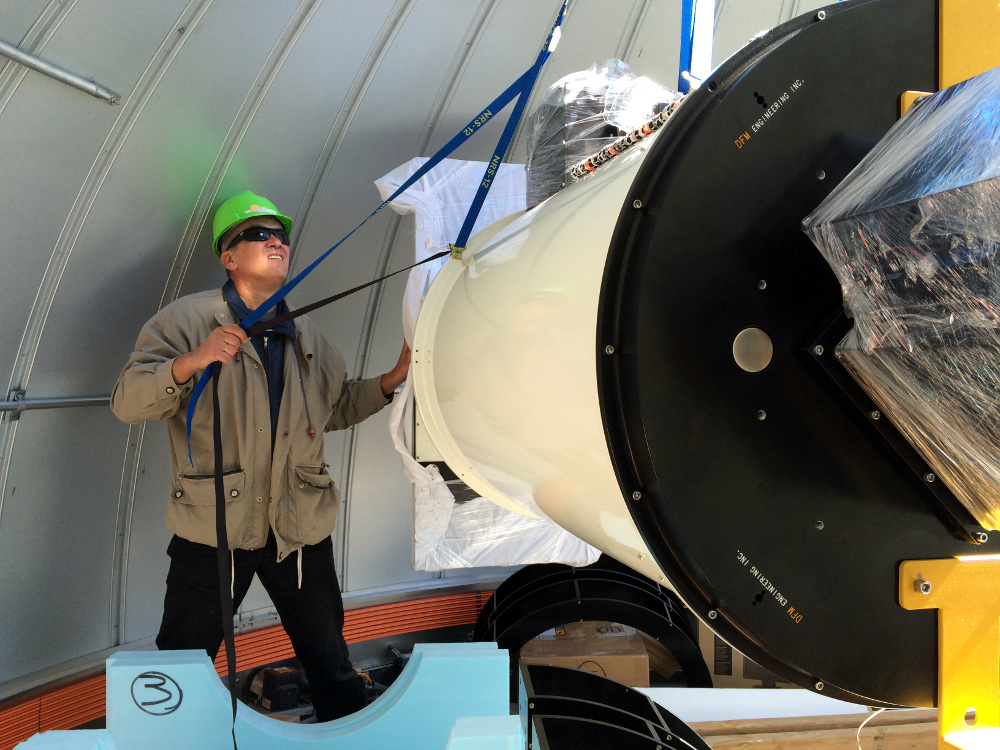
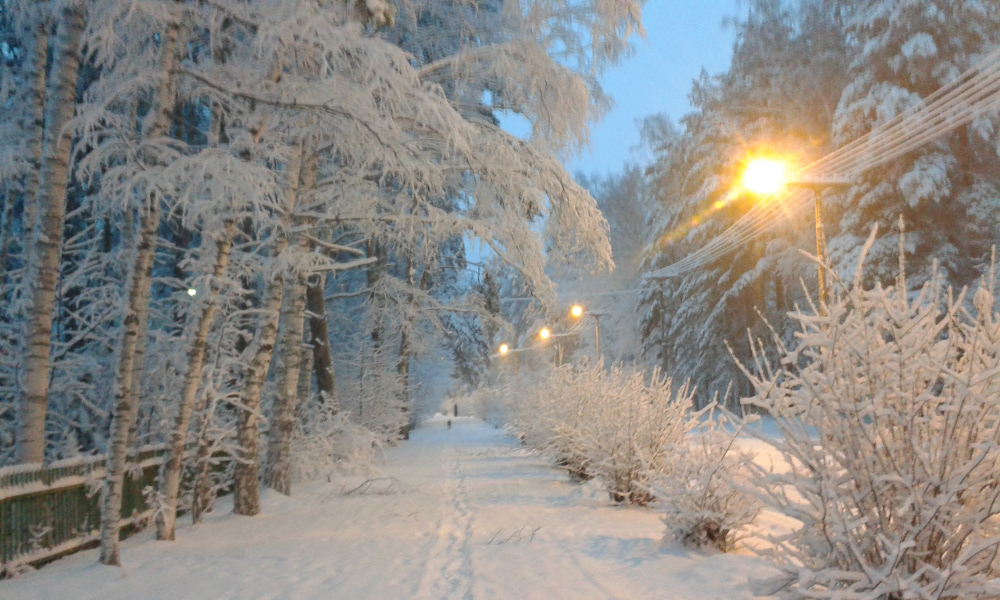
The First Seven ATLAS NEOs
Since our last post in December, ATLAS operations have become smoother and more efficient. We have resolved a host of problems, improved our hardware significantly and our software enormously, and gained a great deal of experience managing our unique asteroid-detection system. We are now reporting asteroid discoveries from each night promptly in the morning, with the result that each new discovery gets followed up by other astronomers across the world on the following night. This is very important, since additional observations of a newly discovered asteroid are essential to calculate an accurate orbit and evaluate any impact hazards. Both amateur and professional observers in many nations routinely participate in this endeavor.
ATLAS has now discovered seven NEOs that received official designations from the Minor Planet Center: two in December, one each in January and February, and three so far in March. They range in size from little 2016 CS247, with a diameter of about 30 meters (100 feet), to 650 meter (2000 foot) 2016 BZ14. This last object came as a surprise: we would not have expected our little ATLAS telescope to catch an asteroid as large as 2016 BZ14 before any other survey. ATLAS is optimized for small objects passing very close to Earth, and surveys using bigger telescopes normally find all of the larger, more distant NEOs. However, 2016 BZ14 shows that on rare occasions a larger asteroid can slip through the cracks.
All of the ATLAS NEOs were big enough to be dangerous – even 2016 CS247 could have destroyed a medium-sized city – but thankfully all seven asteroids passed by Earth at a safe distance, and orbital calculations show that none will be a hazard for the foreseeable future.
Like their sizes, the orbits of ATLAS NEOs exhibit a wide range of properties that illustrate both the versatility of the ATLAS survey and the intrinsic diversity of the asteroid population. The figures below show the orbits of each new NEO in relation to Earth’s trajectory during the period surrounding the discovery. Earth’s orbit is the thick, pale-blue line, and its location on the night of the discovery corresponds to where this line crosses the x axis. The diamond symbols show the position of each asteroid when ATLAS discovered it. The first figure gives the view looking down on Earth from the direction of the North Ecliptic Pole. The second gives the view from the plane of the ecliptic. In both cases the Sun is out of view on the left, and the axes are labeled with distance in astronomical units (AU). It is easy to see that 2016 BZ14 was discovered much farther from the Earth than the other, smaller asteroids, which had to come closer before ATLAS could see them.


ATLAS makes three discoveries in one week
During the week of December 10th ATLAS made a trio of new discoveries: two Near Earth Objects (NEOs) and one comet. Their orbits were determined automatically by the ATLAS software, and reported to the IAU Minor Planet Center at the Smithsonian Astrophysical Observatory.
The largest object, numbered 2015XU378, has an estimated diameter of 250 meters, and is classed as a Potentially Hazardous Asteroid (PHA). It passed within 0.066 AU (10 million km) of the Earth on December 8th.
The other NEO, 2015X168, has an estimated size of 50 meters: its perihelion distance is 0.82 AU, which means that during some parts of its orbit it is closer to the Sun than is the Earth.
The comet that ATLAS found, C-2015X7, has a perihelion distance of 3.8 A.U, so no threat to Earth. UH astronomer Richard Wainscoat confirmed the discovery by taking a pair of images (below) using the CFHT telescope. They confirm both the extended shape of the image and its changing position relative to the background stars.
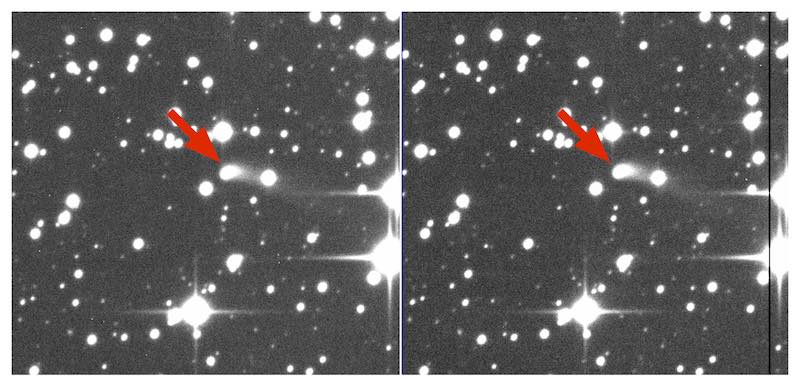
Our first NEO!
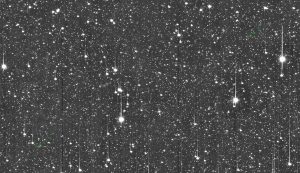
ATLAS has discovered its first near-Earth object (NEO). The image shows the beautiful starfield the asteroid was crossing when we discovered it (more on this below). The new asteroid has received the designation 2015 PE312 from the Minor Planet Center (MPC). Its brightness indicates that it is probably 200-500 feet (60-150 meters) in diameter.
The reason for the wide range in possible sizes is that a large, charcoal-black asteroid could have the same brightness as smaller one made of light-gray rock. We could tell the difference with sensitive observations from an infrared telescope (dark-colored asteroids absorb more of the Sun’s heat and glow brighter in the thermal infrared), but no infrared observations have been made of 2015 PE312 so far.
To receive an official designation (i.e., to be truly ‘discovered’), an asteroid has to be measured at least twice each on two different nights. It’s important to have a rule like this because it’s easy to mistake variable stars, cosmic rays, and other ‘image artifacts’ for asteroids. Watching how objects move from image to image and night to night is what allows us to distinguish real asteroids from lookalikes. ATLAS observed 2015 PE312 eight times in all: four times each on the nights of August 9th and 10th. Although we have learned that one other asteroid survey took images of it without knowing it, ATLAS is the only observatory in the world to report observations of 2015 PE312 to the MPC. If not for us, the object would still be unknown to the human race.
Finding a faint, fast-moving object like 2015 PE312 against the confusion from countless thousands of background stars is quite a challenge — one that ATLAS and other asteroid surveys meet with a lot of hard work and clever computer programming. The starfield image above has all eight detections of the asteroid added in at their correct positions and brightnesses, and indicated with green circles (click on it for higher resolution). The asteroid was moving from upper right to lower left: the detections from the night of August 9 are bunched together near the upper right, then there is a big gap that corresponds to the daytime interval between observing nights, and then the images of 2015 PE312 from August 10 are bunched together at the lower left. You will probably have to click on the image to download a higher-resolution version to see the green circles and the tiny points of light representing 2015 PE312.
An accurate, computerized orbit calculation was required to be sure that the two sequences of faint images were actually the same asteroid. This calculation showed that 2015 PE312 made its closest pass to Earth on August 19, at a safe distance of about 2.7 million miles (4.3 million km, or 0.03 AU). This is about eleven times as far away as the Moon.
Commissioning starts
We’re now embarked on the long, slow process of commissioning. There’s a lot of things that we need to work on: limits and stops to protect the telescope and mounts in case the software does something stupid, getting the mount on Mauna Loa going with the Pathfinder telescope, mount software, learning how to reduce these huge new images, and starting to discover asteroids. It’s the usual stuff. Next week we’ll activate the telescope on Mauna Loa and start to get some parts built for limits and other things. In the meantime we left Haleakala in the hands of our capable night assistants, Griselda and Mortimer, who provide indispensible help every night we collect data and shake the system into full operation.
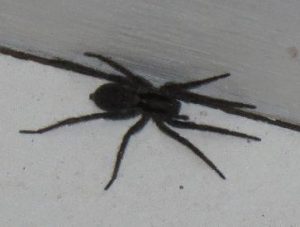
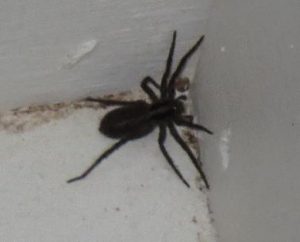
Optics Performance
Wednesday we worked to explore the image performance as a function of detector position relative to the field correctors. We got pretty good images over the whole field of view, but the seeing was poor. We’re thinking we’ve got to vent this dome – the skin gets really hot during the day and the closed telescope tube takes a long time to cool off.
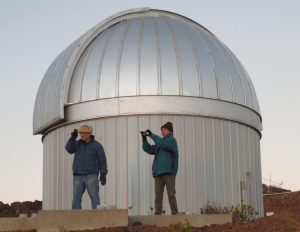
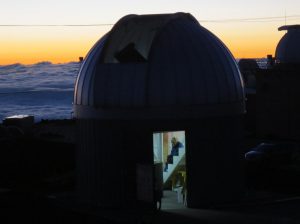
Thursday we cleaned, cleaned, cleaned! We put things on UPS’s, rebooted everything to ensure that we can run remotely (or robotically), and finally drove down (during the day!), very tired but very pleased. ATLAS is now real.
